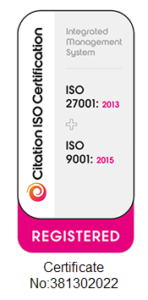Preparation, Rehearsal and Variety: Drawing on Stand-up in Presentations
There is a lot that presenters can learn from stand-up comedy.
A good stand-up comedian will sound as though he or she is having a conversation with the audience, but the performance is highly scripted and rehearsed.
The content is practised, as are the rhythm, structure and timing. To watch a brilliant piece of comedy writing being performed, whether it be theatre, film or stand-up is an unalloyed pleasure. The skill involved is not to be underestimated.
Just like comedians and actors, presenters need to rehearse. When I tell people this, they often say to me, “I don’t want to sound robotic”, which shows they’ve been doing the wrong type of rehearsal. It’s not about memorising your script word for word and mouthing without meaning on the day.
Start by thinking about your audience. Think about what matters to them. What is the impact you’re hoping to achieve? Constantly looking at your notes won’t do.
Hear yourself speak
When I’m preparing a speech, I use a Voice Memo on my iPhone (other smartphones have similar software like Recorder). I urge my coachees to use the same approach. Say a few things out loud and record them. Listen back later. Without realising, you’ve started creating your message –and you’ve done it with the spoken word, not the written word or a slide that you somehow have to bring to life.
Write some more. Say them out loud and record them. Play with themes and ideas. The speech is taking shape. Once you’ve collated your structure, Voice Memo can help you with the flow. Listen to your pace, your “ums” and “ahs”. Mix up your presentation with stories, a few powerful facts, pauses, emphasised repetitions, metaphors and changes of pace. Just like you do when telling stories to your close friends…
Most important, start early – weeks or days in advance if you can.
That may not always be possible, but leaving it to the last minute is like entering the Tour De France with a puncture. You’ll find that once your mind is thinking about what you might say, ideas and phrases will pop into your head at unexpected times, perhaps in the shower or while washing up.
Often when I coach senior leaders on their presentation skills, they start by stumbling through a script typed (single spaced, small font) for them by their junior employees. Those people aren’t thinking about presentation and audience. They’re thinking, “I must put everything I can in to impress my boss”. They’ve pulled together 50 congested slides. The result brings only fear to the boss. I can see that haunted look, reminiscent of being at school and reading out your essay to the class.
So, I move on by thanking the team for their hard work and asking the leader what gets them out of bed in the morning, what’s keeping them awake at night, what interests them, and what they are passionate about. I scribble down some notes picking up on what made me sit up – and what clearly energised the coachee. I play it back to them; “That’s your speech”, I say. The relief is palpable. Even the greatest actors couldn’t bring those 50 slides to life, but turning a more focused set of ideas into an engaging presentation is well within their grasp.
Just like the gifted stand-up comedian, a presenter needs to have a good start, a good end and to pepper the session with different themes.
Here’s a story that’s draws us in but relates to the topic. Here’s a killer fact. Here’s an analogy that makes us the see the situation afresh. Here’s an interesting phrase that says it all. These are all skills that comedians use.
Prepare, rehearse, slow down
Everyone can be a good presenter as long as they prepare, rehearse, slow down and mix up their presentation. And in virtual times, it’s important to remember to smile. Perhaps have a reminder on your screen to prompt you. Draw a smiley face on a Post-it Note and have it just above your camera (which is next to the green or white light on your laptop). Smiling lifts your body and opens up your breathing, so there are technical reasons to smile, as well as to create audience engagement. If you’re smiling, people will smile back. Your negative thoughts dissipate and your delivery will flow.
In the virtual world, you need to shorten your presentation and break it into bite-size episodes. I think of Zoom meetings as a series of five-minute episodes, with a change of dynamic in each episode – a different person, a slide, a prop, or asking for responses in the Chat box. The latter is a vital channel. Introduce it as early as possible, even before you start. Ask people to put in where they are (not just where in the world, but which room), what they are looking forward to at the weekend or even what they might have on their feet.
How we deport ourselves, our body language, our voice and our ability to visually engage the audience are all integral to good presentations – and all are skills we can learn from actors, comedians and from improv.
Neil Mullarkey is an author, actor, comedian and accomplished management trainer. He co-founded the London Comedy Store Players with Mike Myers and has many credits in TV, radio and film, including two Austin Powers films. Starting with improv skills, Neil inspires business people to embrace their creativity and enhance their communication skills, giving workshops and keynote addresses in 24 countries before 2020. Since then, his virtual sessions have been in demand globally. His book, Seven Steps to Improve Your People Skills, is available on Amazon and Kindle.

